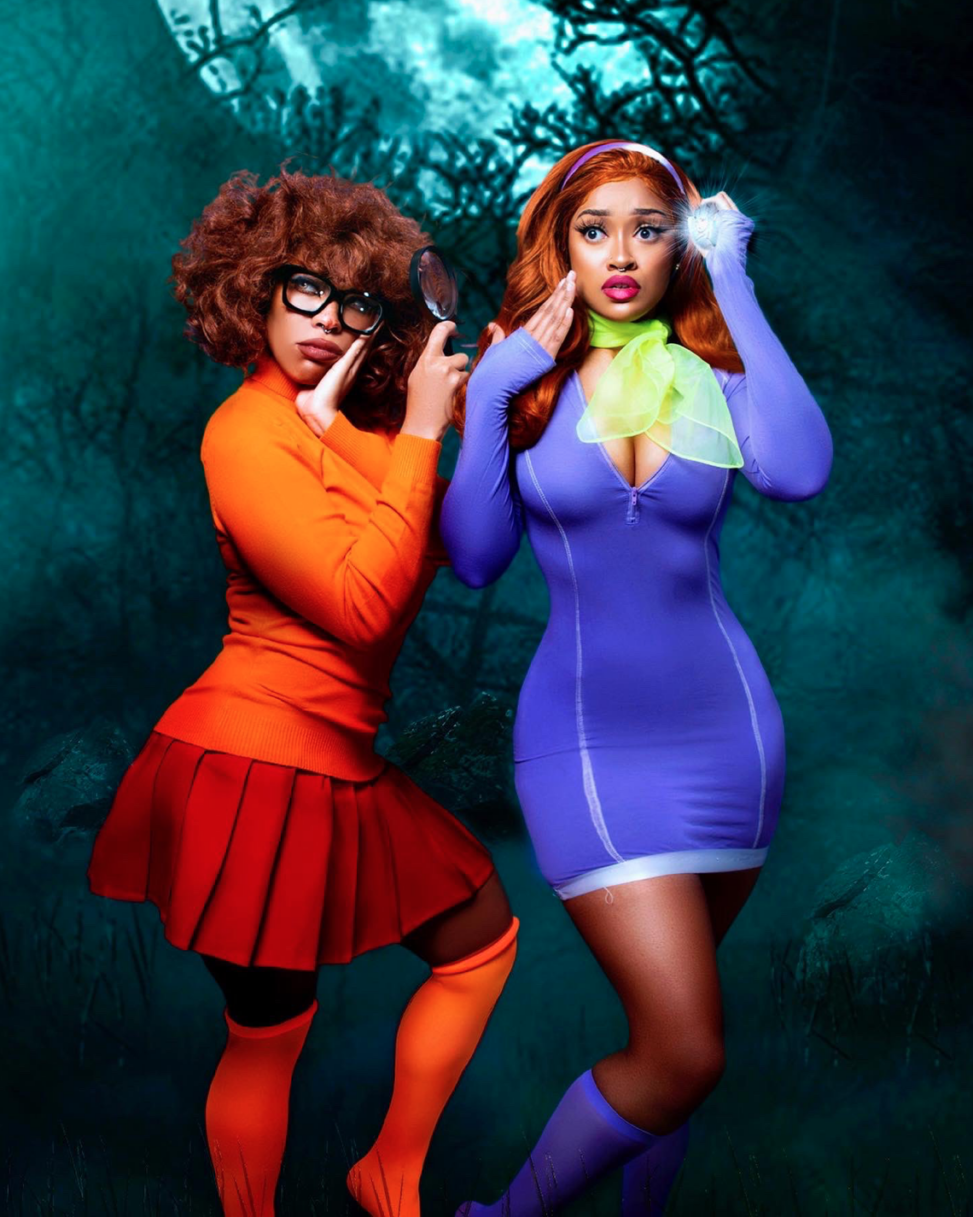Above is a photo centred on popular fictional characters Velma Dinkley and Daphne Blake. However, these originally cartoon-drawn characters from the 1960s are humanized through the creativity of physically real beings. This type of costuming is called cosplay and as stated by Atkins (n.d) as a more dedicated form of dressing as characters originally developed through the media. This recreation from a popular spooky-themed kids television series, for example, has been sexualized, racialized, and assembled with care in both its composition and the character’s cosplay.
Daphne and Velma are of opposing personalities in the series but here they are similarly presented in innocence and sexuality. Take for example, how Daphne’s character personality as the popular one comes through as being a materialistic hottie. And, additionally, Velma’s shy know-it-all vibe from the show has been transferred into a visual representation of a secretly sexy secretary type. Both considerations show evidence of the over-sexualization rampant throughout cosplay culture. Furthermore, an example of how globalization manipulates the ideologies of cosplay is how Halloween costumes are created in the mass production of popular characters such as Daphne and Velma.
Halloween is widely celebrated using costumes of popular characters or ideas. This can include homemade costumes, costumes such as the one pictured above that are assembled from seemingly purchased pieces, and completely manufactured costumes. Some issues we see regarding Halloween costuming across all costume types are over-sexualization and inappropriate culturalization of marginalized populations. For example, Gaines (2020) speaks to making sure you are respecting the culture of your chosen character and encourages other cosplayers to avoid blackfishing, blackface, and other accidental cultural appropriation acts by designing any racialized character or trope to reflect the personality traits and colour schemes of a character’s outfit and accessories over the colour of their skin (2020).
This photo was used for an article explaining these important cosplay considerations. Furthermore, it encourages others to enjoy and embellish their costumes. This is done through the use of props such as Daphne’s flashlight and the appearance of light fog in the background of the photoshoot. Gaines (2020) also features a backdrop of the Scooby-Doo creepy tree scene that is visualized in both the show itself and its theme song variations over the last few decades. Lastly, the characters are confident and beautiful showing confidently their hard work of cosplaying as Daphne and Velma and inspires others to polish their cosplays with culture and class.
References
Atkins, T (n.d) Week 5: Assignment 2. [Powerpoint]. Retrieved from: https://moodle.tru.ca/course/view.php?id=35377#section-6
Gaines, A. (2020). How you can cosplay a popular black character without terror. [Webpage]. Retrieved from: https://medium.com/illumination-curated/how-you-can-cosplay-a-popular-black-character-without-terror-691e9a27de8
